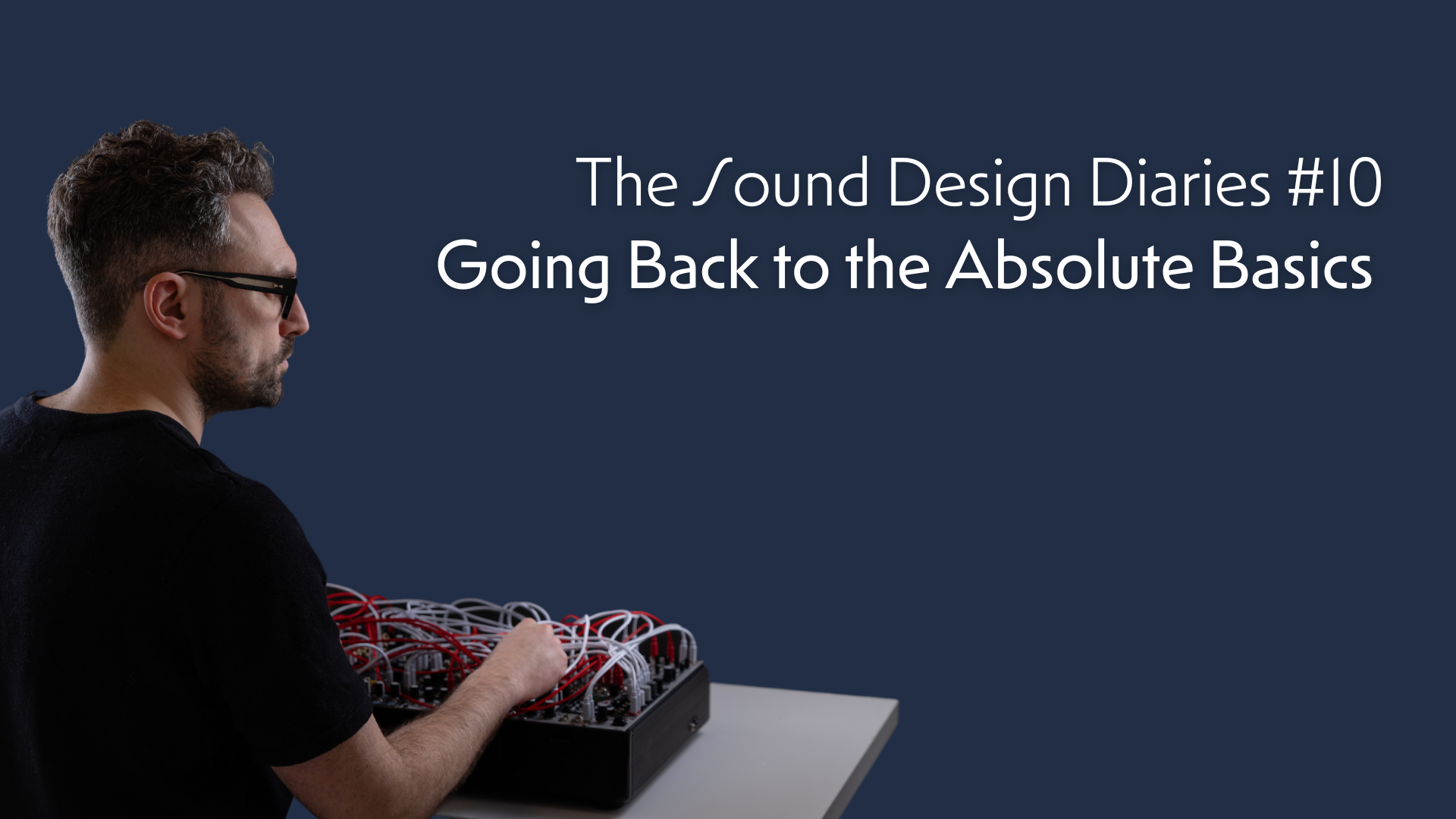Sound Design Diaries #10: Back to the Absolute Basics
< BackA couple of weeks ago, I was giving lessons to a very talented student of mine who, despite having an intuitive understanding of synth programming thanks to her musicality, didn’t know much about the basic principles of sound synthesis.
One well-organised hour covering basic waveforms, filters, and envelopes—with the help of an oscilloscope—was enough to completely change her approach. In the following lesson, she was already making some really refined synth patches.
Cut to last night: I was listening to a video game score I really love—the soundtrack to The Ascent (Neon Giant, 2021) by Paweł Błaszczak —and I was mesmerised by the beautiful synth work. A lot of these sounds are very simple, but so incredibly well-crafted: each one perfectly fits its place in the mix, each one serves the story in the cyberpunk world the game is set in.
These two events combined made me think about the power of knowing classic—dare I say basic—synth patches.
Just like musicians need to learn basic instrumental or vocal techniques to perform, sound designers need to master the building blocks of fundamental synth sounds.
We need a set of recipes we can use as starting points—to disrupt and innovate, or maybe to reproduce a historically accurate sound.
For this reason, I’ve started putting together a series of synth recipes that document all the essential synth patches. I’m sure I’ll cover some of them in these pages, others will go on my YouTube channel… or they’ll simply form a useful document for the growing number of musicians who ask me for one-on-one musical sound design lessons.
Here’s the first one:
Creating Classic Synth Strings
For this patch, you can use any polyphonic software or hardware synthesizer. The only requirement is that it has at least two oscillators.
- Make sure you’re not in unison or monophonic mode: you want full polyphony for this sound.
- Set the two oscillators’ shapes to sawtooth and adjust their levels so that they’re roughly equal in the mix.
- Detune one of the two oscillators slightly using the fine-tune control. It’s hard to give an exact value for the detuning—this is something you’ll need to work out by ear. That said, if your instrument indicates pitch in cents, remember that 100 cents equal 1 semitone, and you want the detuning to be less than that. The goal here is to imitate the small pitch variations that occur when a full string section plays the same note—not to create dissonance.
- Set the amplifier’s envelope so that it has a relatively fast attack, decay and sustain at about 50% and a relatively slow release.
- If your synthesizer’s filter offers multiple modes, set it to low-pass and set its cutoff frequency to around 1000 Hz. This setting doesn’t need to be exact—trust your ears to find what sounds good.
- Set an envelope to modulate the filter cut-off frequency in full and set the envelope parameters similar to the amplitude envelope, but with a slower attack.
You can also add chorus and reverb to taste, the more you do that, the more you’ll be referencing the 80ies, which you may or may not want.
One thing to watch out for in this patch is overdoing the attack times on both envelopes. While it’s true that simulating a string ensemble bowing means avoiding sharp attacks, you also don’t want the attack to be so long that the sound loses focus.
A good rule of thumb is to keep the attack fast enough that moderately fast lines are still playable on the instrument—anything longer drifts into "pad" territory.
And that’s it.
Now that you have a basic synth string sound, go make it yours.
And maybe check out my video about making synth strings from classic to ultra-modern on YouTube!
- Tagged:
- Music
